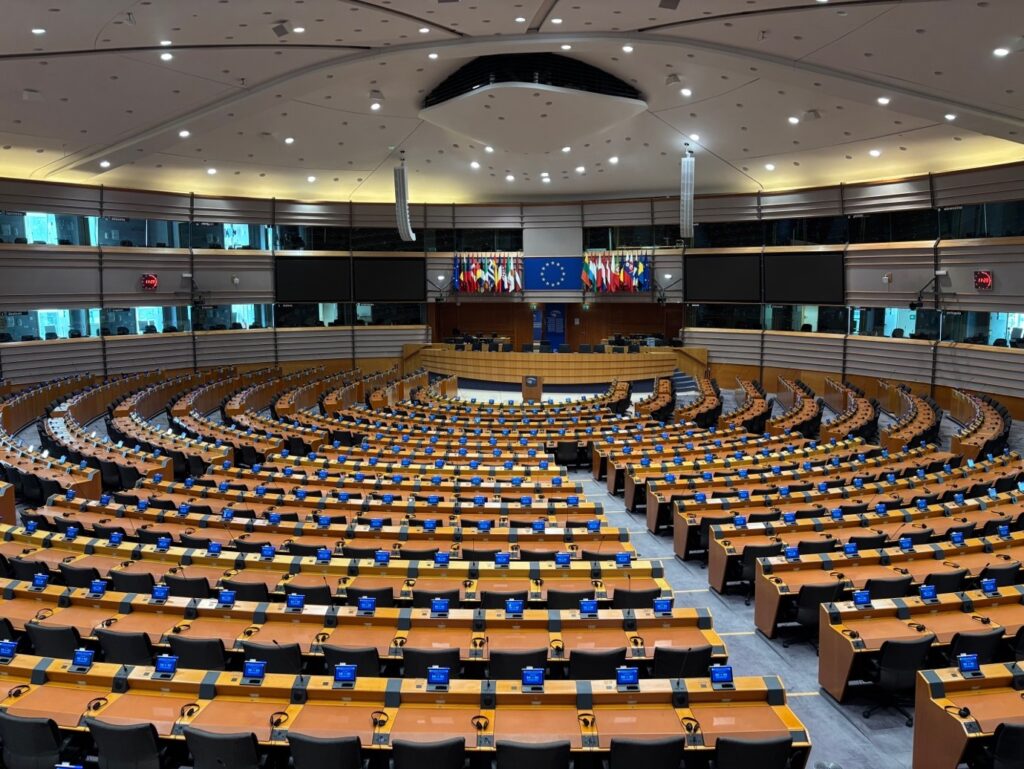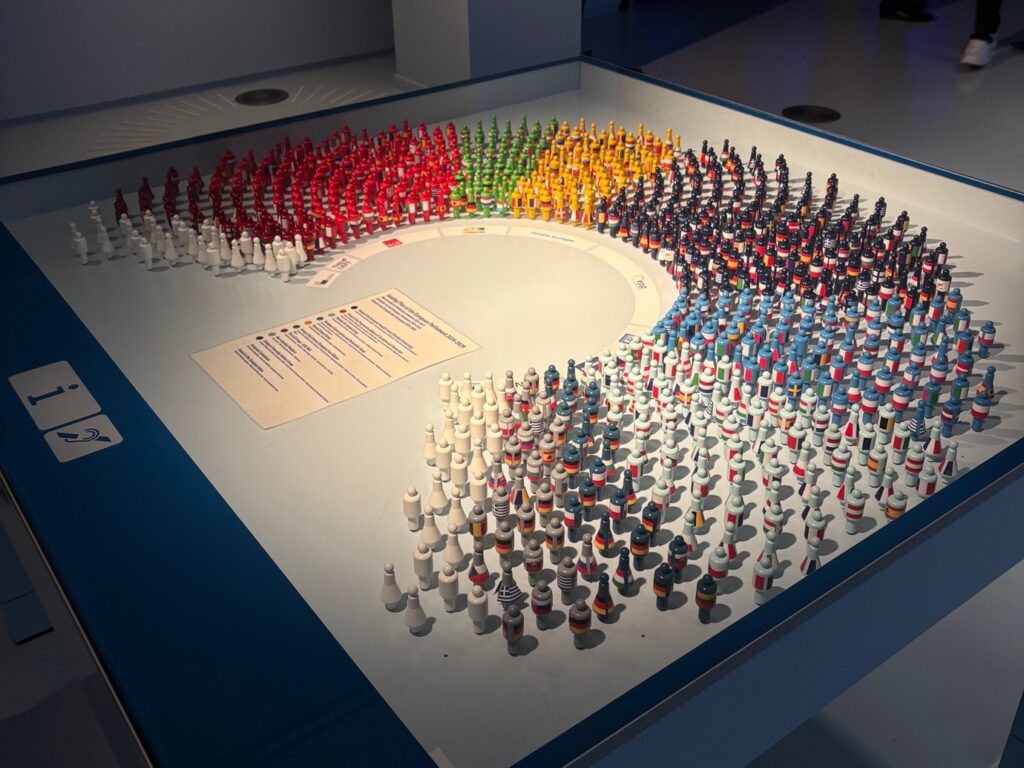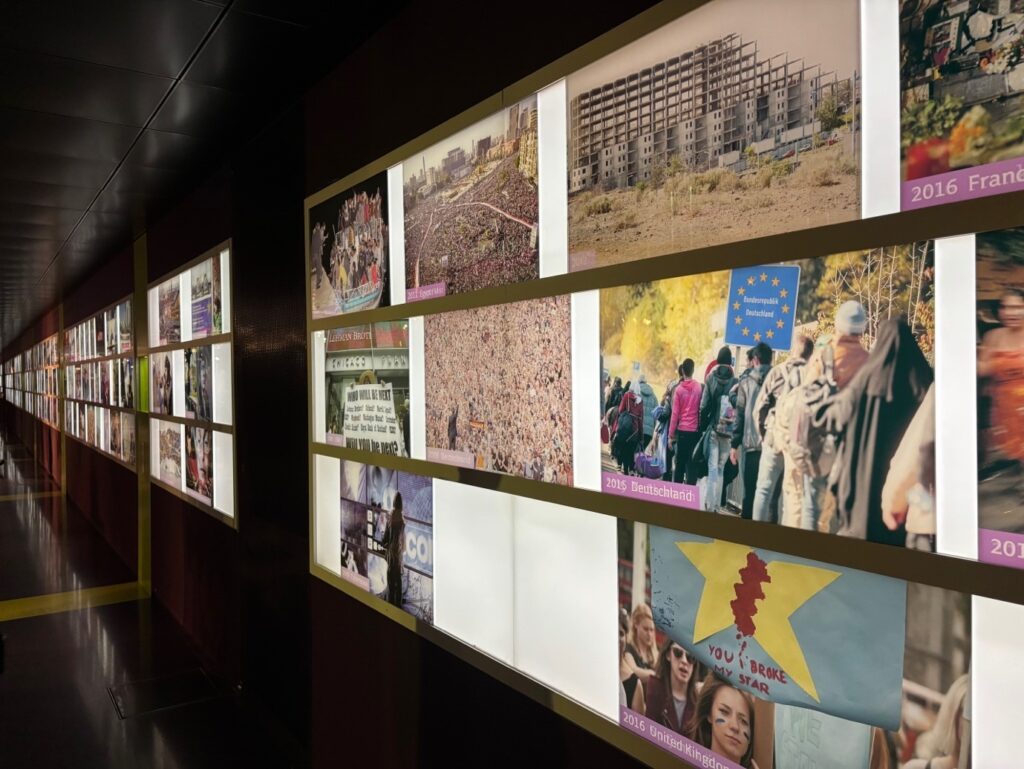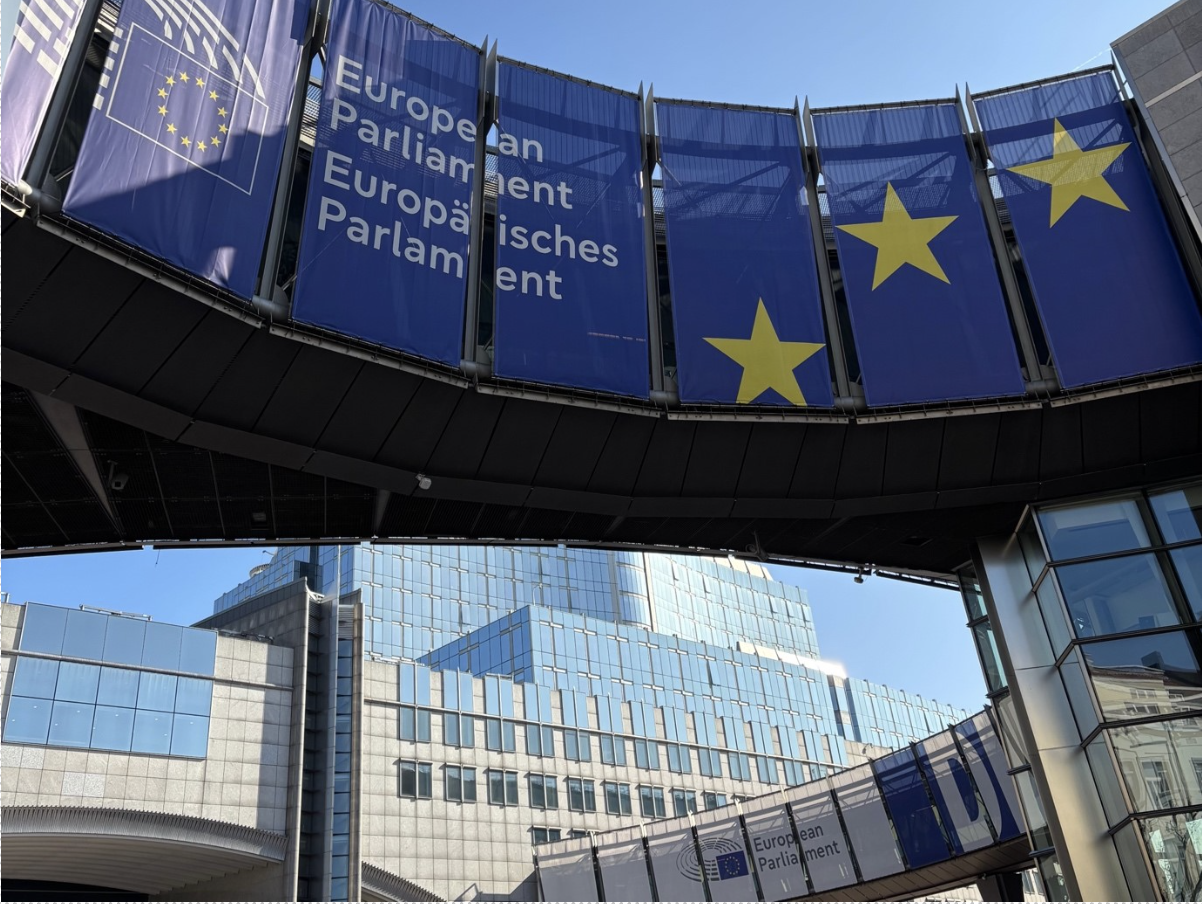We often read about political institutions in news media or in our academic studies, but what is it like to visit one? Here, Year 3 BA Politics student Katy Smith fills us in on her visit to Brussels, and in particular, to the European Parliament.
Known for its historical architecture, renowned cuisine and, allegedly, the world’s most disappointing landmark (Manneken Pis), Brussels truly has earned its title as the ‘Capital of Europe’. As a politics student, visiting countries’ seats of Government are simply unmissable experiences and invaluable to my academic studies. On a recent trip to Belgium, a visit to the European Parliament proved to be a standout highlight. The Christiansborg Palace of Denmark, Germany’s Reichstag, and the Parliament of Austria are just some of the Government buildings I have had the privilege of visiting, yet none have provided such insight into European democracy like the European Parliament.

Accessible with a valid passport or national ID card, the European Parliament offers free guided tours of the Hemicycle and self-directed visits to the Parliamentarium in the European Quarter, Brussels.
The hemicycle of the European Parliament in Brussels is the seat of 720 elected members and hosts the debates, votes and passings of legislation that affects over 448 million EU citizens. Accompanied by my passport, I entered the Hemicycle with the tour guide and a group of people from every corner of the world. The free tour offered a glimpse into the political everyday workings of the Parliament. The tour guide provided us with details on the election processes and the roles and duties that the 720 Members of the European Parliament (MEPs), 14 Vice Presidents and the President, Roberta Metsola, are irrevocably bound to. We were also offered personal insights on the Parliament’s 24 interpretation booths that are situated above the members seats, one for each official EU language. MEPs commonly address the plenary Chamber in their native language and the 24 interpretation booths in the European Parliament translate for a wider audience. The tour guide also regaled us with stories of misinterpretations in European political history as well as in depth explanations on the different parties and the importance of their positions and sections in the Chamber, deepening mine and the other guests understandings of the workings of the European Parliament.

The European Parliament has witnessed immense historical change, trials and triumphs since its founding on 19th March 1958. Situated beside the Hemicycle, the Parliamentarium brings to life the dynamic history of global politics by offering a free, self-directed tour. Featuring a collection of immersive and interactive exhibits, the Parliamentarium showcases global history with a particular focus on Europe and its politics in the most captivating way. I was particularly struck by the wall on historical changes in global politics that ranged from World War I, ABBAs win at Eurovision and, of course, Brexit. It was a fascinating opportunity to witness and understand how the European Parliament responds to global changes and challenges over the years.

The opportunity to sit in the heart of European politics is truly unparalleled. This experience reaffirmed the importance of interconnection in understanding the complexities of global governance and political affairs. It served as a compelling reflection on the importance of studying politics in this ever changing and complex political landscape.
Katy Smith is a third year BA Politics student at the University of Stirling. All images are the authors’ own.
